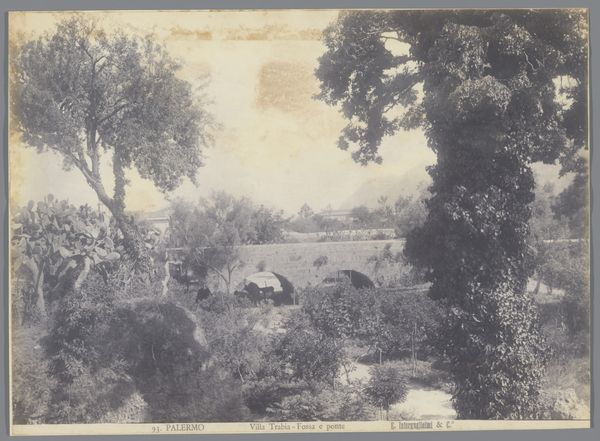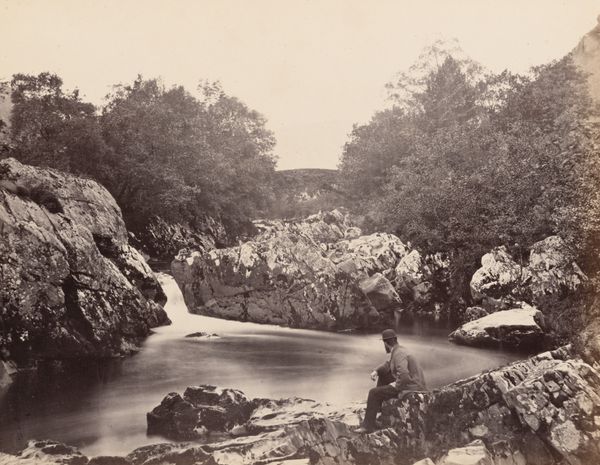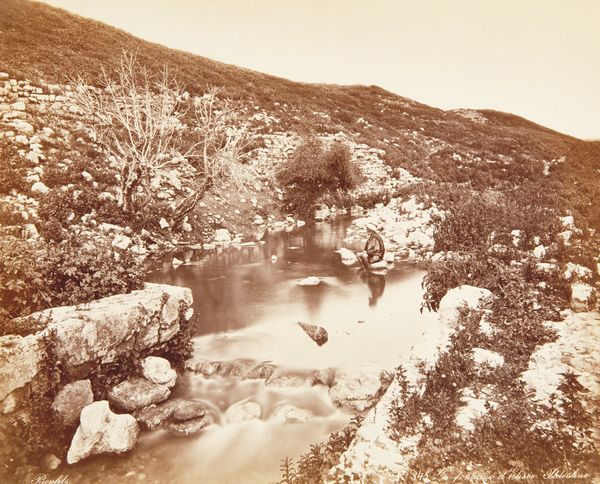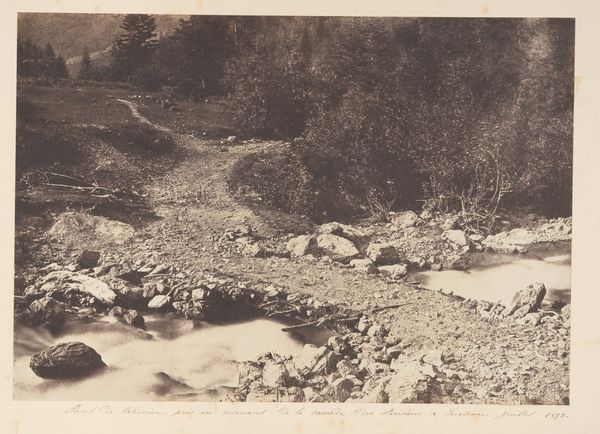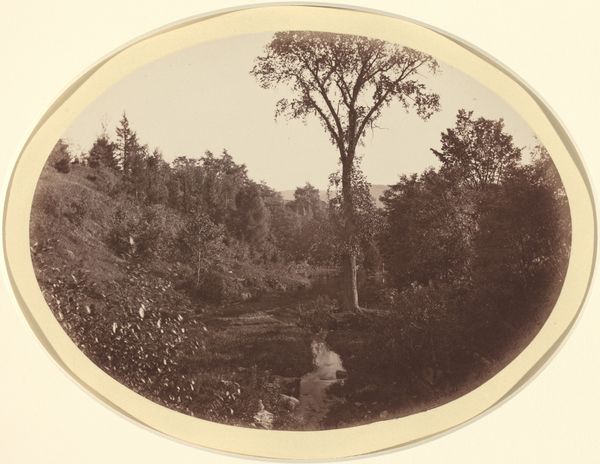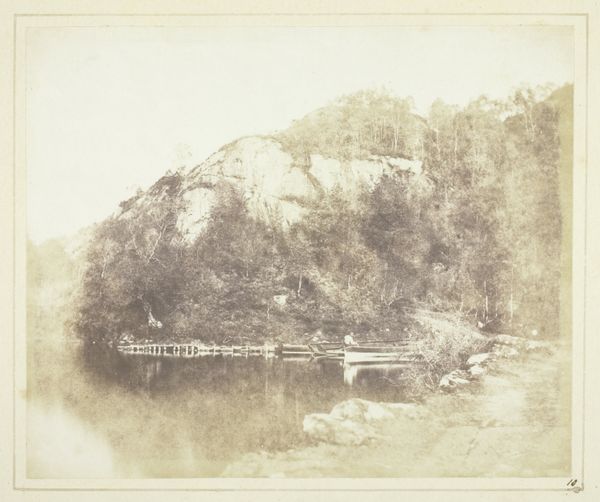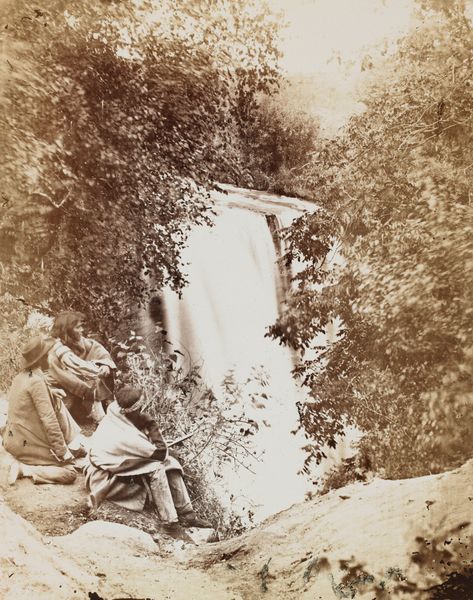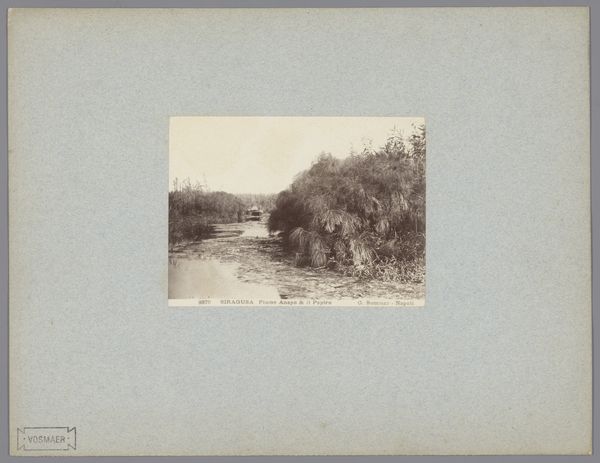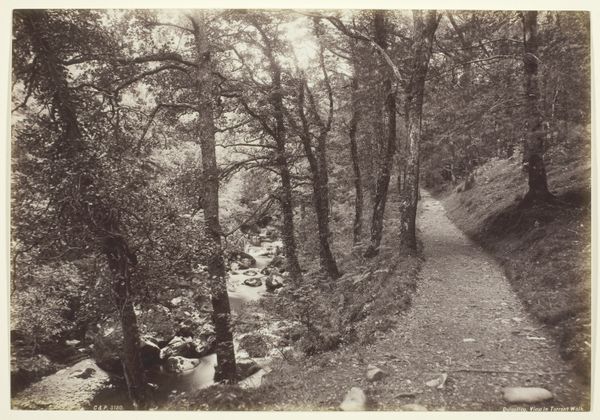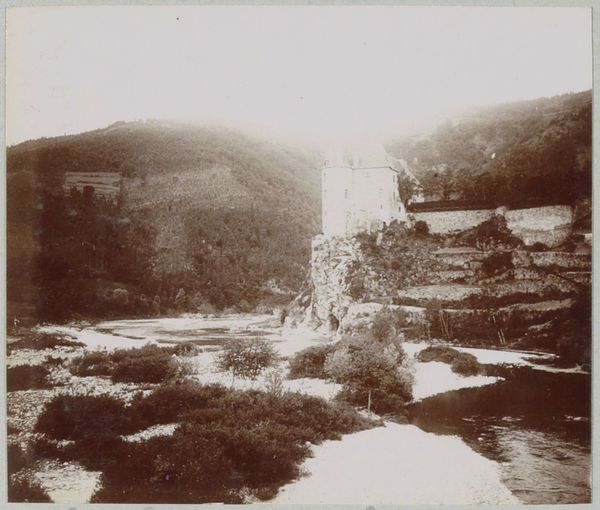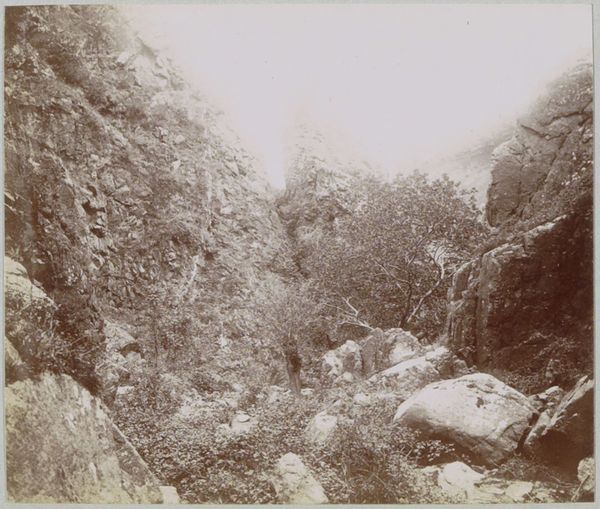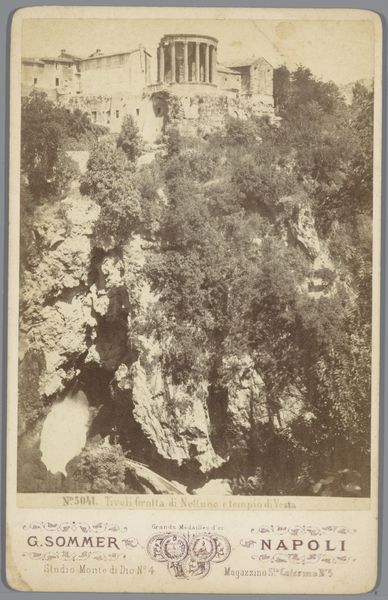
Groepje mannen rustend op de grond, langs een dakrand van een wit huis, Iran c. 1885 - 1910
0:00
0:00
photography
#
portrait
#
landscape
#
photography
#
orientalism
Dimensions: height 155 mm, width 207 mm
Copyright: Rijks Museum: Open Domain
Curator: Antoine Sevruguin's photograph, "Groepje mannen rustend op de grond, langs een dakrand van een wit huis, Iran," taken sometime between 1885 and 1910, immediately evokes a sense of serene contemplation. Editor: The sepia tones lend the photograph a timeless quality, almost dreamlike. The way the light filters through the trees onto the figures creates such a strong compositional division of dark and light; it’s compelling! Curator: Yes, notice how the photographer has positioned his subjects. We see a group of people in traditional dress resting alongside a white rooftop under a canopy of trees. But I think it's important to examine how this image was likely produced for a Western audience hungry for imagery of the "Orient." How does the photographic technology of the time shape the very gaze, and the narratives we construct around Iranian culture? Editor: That's an interesting point, though I’m particularly drawn to the tonal gradations and how they create a depth and a sense of receding space within the photographic frame. Also, consider the use of light in modulating and uniting all of the diverse components; in this image, it appears to almost transcend subject matter. Curator: I wonder about the labor involved in creating and consuming such images. What kind of studio setting did Sevruguin likely employ, and who was involved in developing and printing his photographs? Were they all local workers, or was the process dominated by Western expertise? Editor: Maybe. For me, what’s far more fascinating is the picture’s success in evoking a feeling of suspended time. Sevruguin balances different aesthetic demands, such as realism with romantic exoticism. He’s not simply recording what's there; he’s offering us a way of experiencing something—a shared moment of tranquility. Curator: I suppose. Examining Sevruguin's work from both perspectives allows for a deeper engagement. I now see it beyond surface impressions to appreciate its role in broader discussions about history, labor, and representation. Editor: And for me, it encourages reflection on the universal experience of calm rest, regardless of cultural boundaries.
Comments
No comments
Be the first to comment and join the conversation on the ultimate creative platform.


